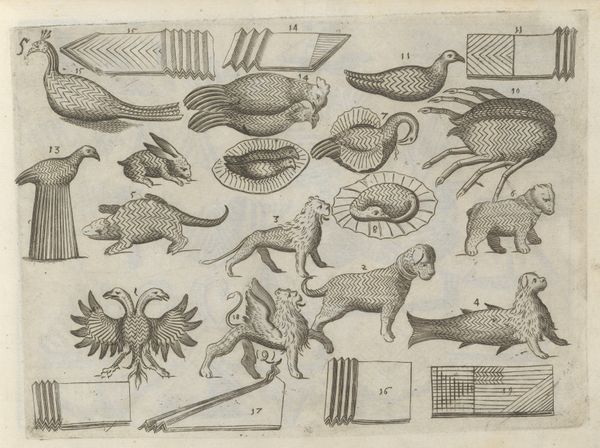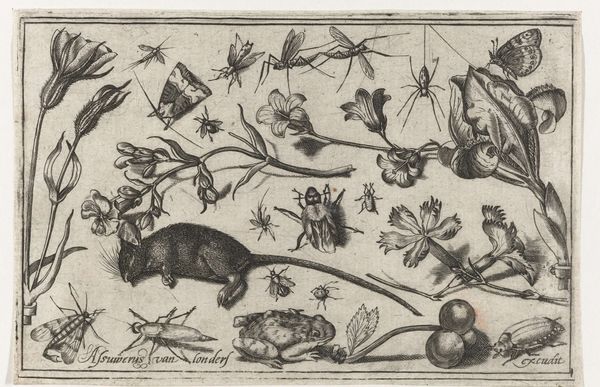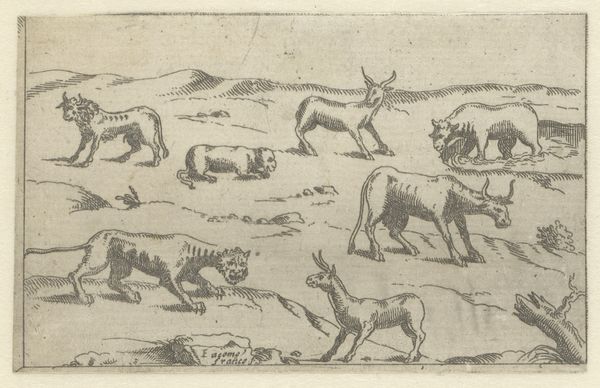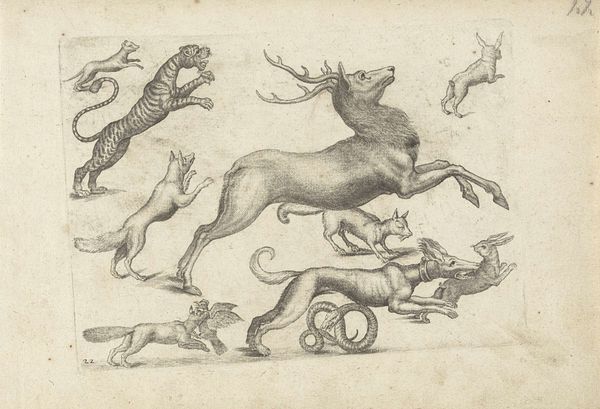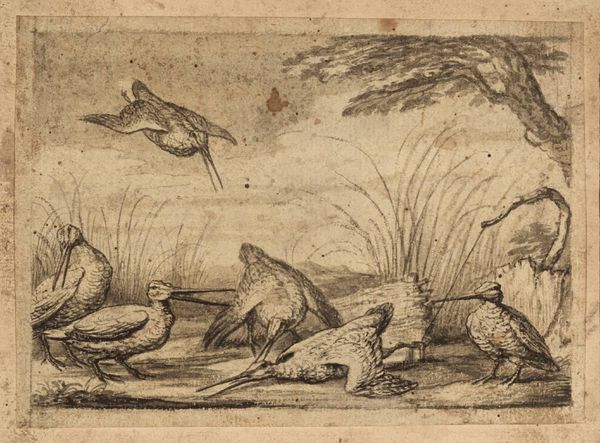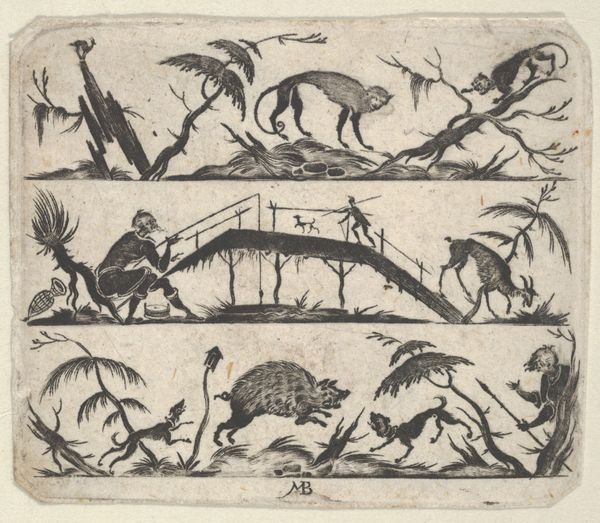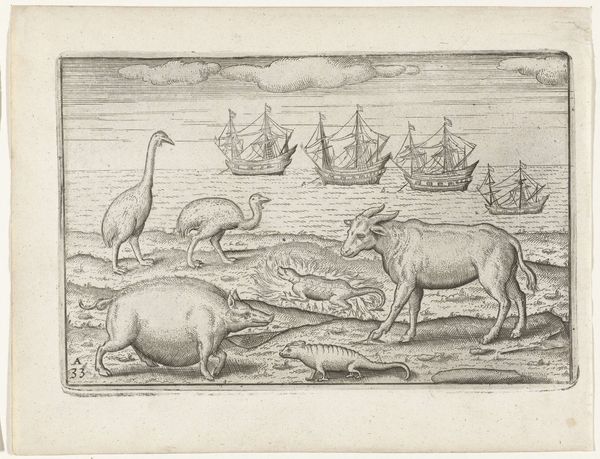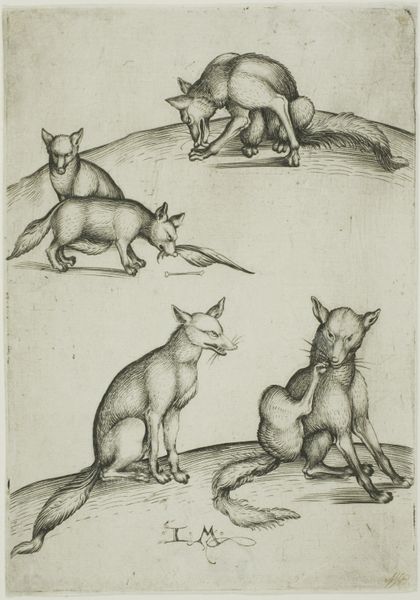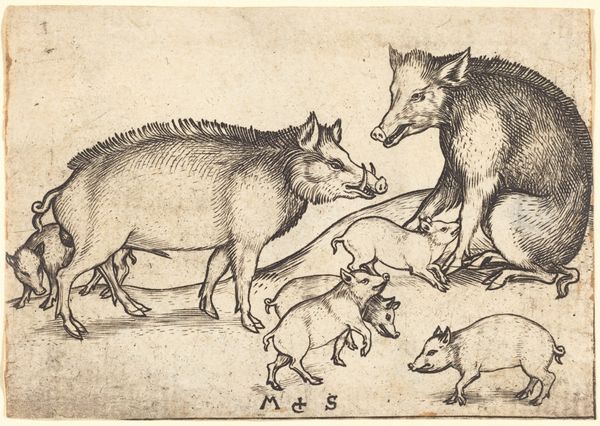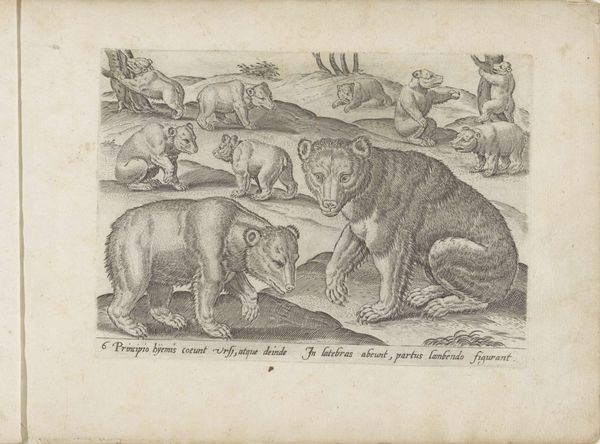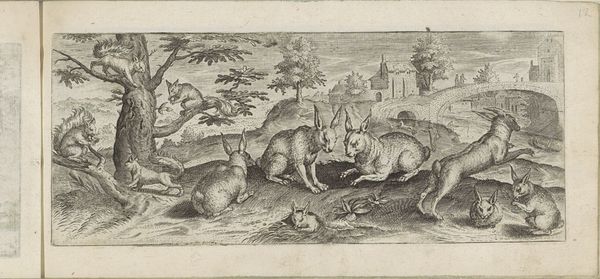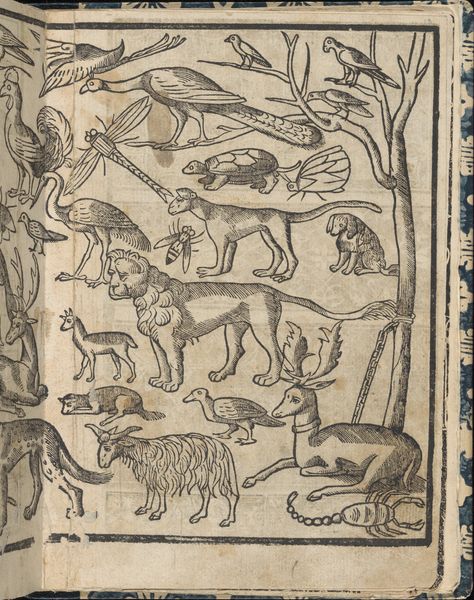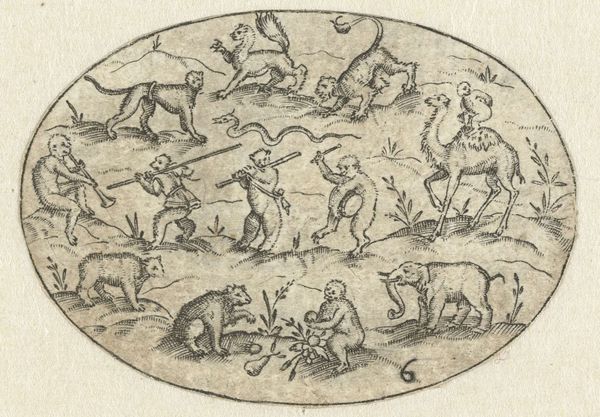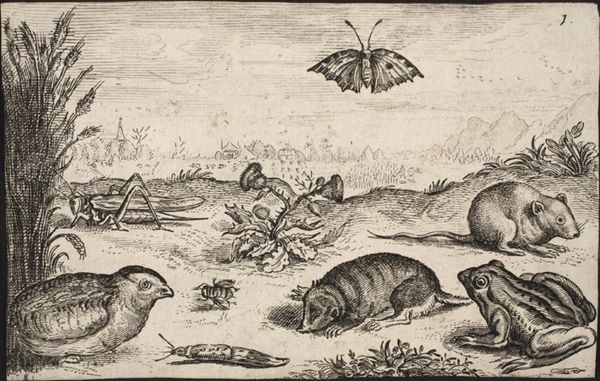
drawing, print, etching
#
drawing
# print
#
etching
#
pencil sketch
#
11_renaissance
#
realism
Dimensions: height 285 mm, width 354 mm
Copyright: Rijks Museum: Open Domain
Editor: This is "Studieblad met verschillende dieren" – "Study Sheet with Various Animals" – by Antonio Tempesta, an etching from sometime between 1565 and 1630. It's currently held at the Rijksmuseum. What strikes me is how all these creatures, seemingly from different corners of the earth, are thrown together. What's your take on it? Curator: It's fascinating, isn't it? These "study sheets," especially during that era, weren’t just about scientific observation. They reflect a world in flux, a moment of expanding global trade and the burgeoning power of empires. Editor: So the lion and the porcupine wouldn’t have actually been hanging out together in real life. Curator: Exactly! The presence of exotic animals—like that lion— speaks to colonial ambitions and the human desire to classify and control the natural world. The sheet becomes a little theater of power dynamics, a representation of the known world versus the exotic Other. Do you notice how each animal seems almost... isolated? Editor: Now that you mention it, they do. It's like they're specimens pinned to a board rather than interacting. Curator: And that's precisely where it becomes an incredibly poignant statement about early modern anxieties and control, both over the natural world, and perhaps, by extension, over different human populations. The "realism" we see isn’t simply about depicting animals accurately. It's also about visually enacting an emerging world order. Editor: So this image isn’t just a depiction of animals; it's also about power. That gives me a lot to think about. Curator: Absolutely. These images teach us so much about the complicated relationship between knowledge, power, and representation. I'm glad you see it that way, too!
Comments
No comments
Be the first to comment and join the conversation on the ultimate creative platform.
